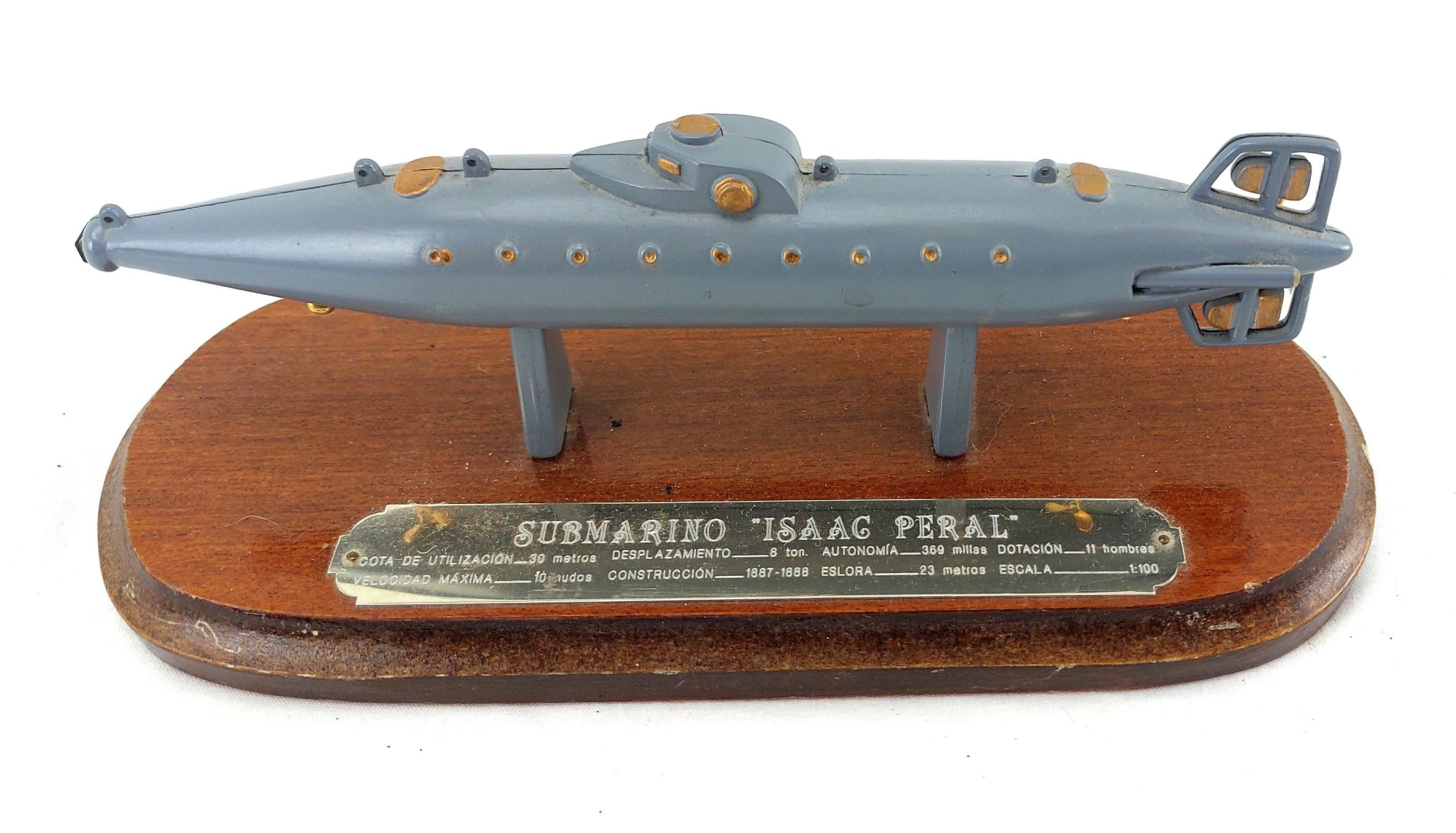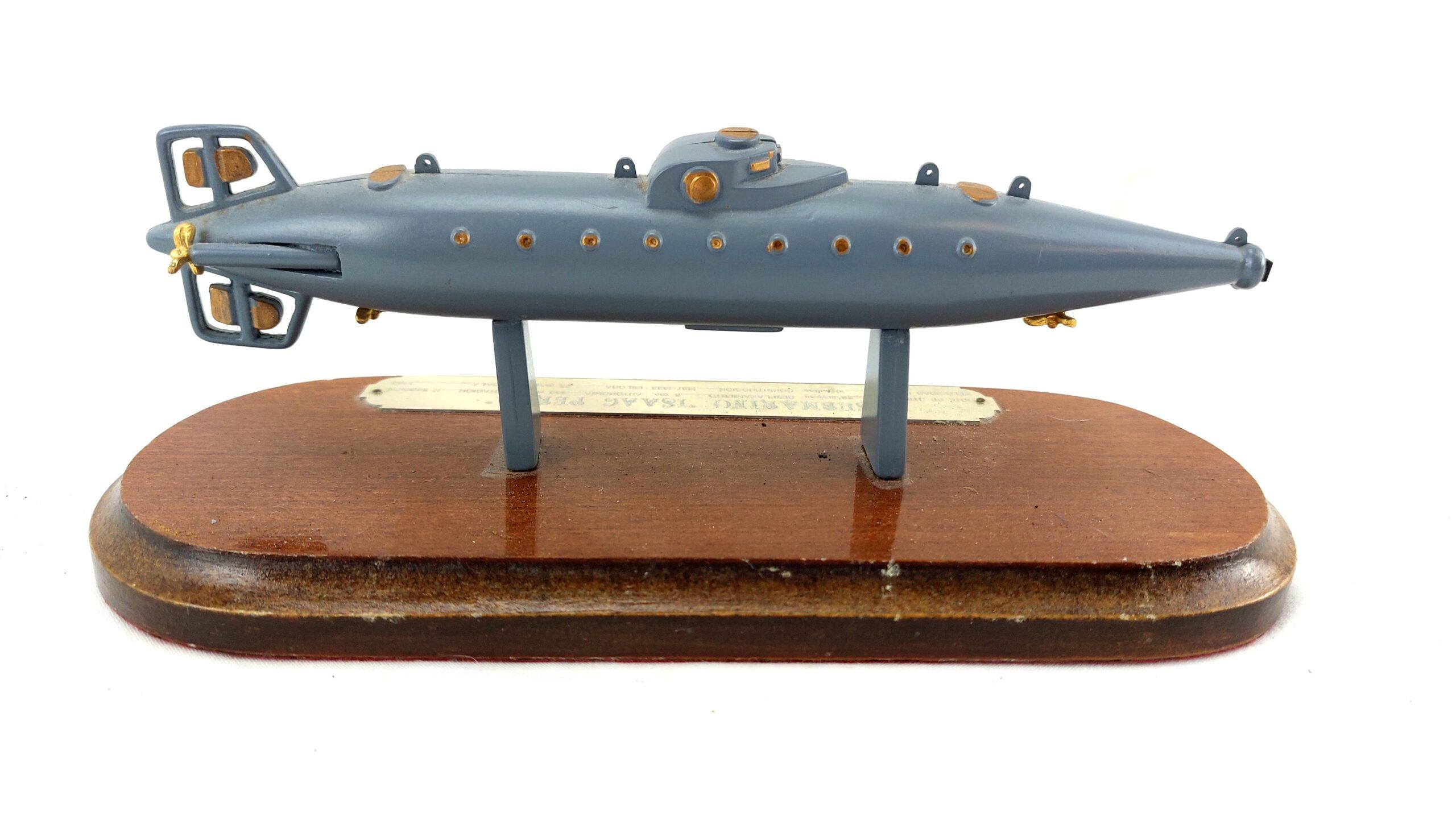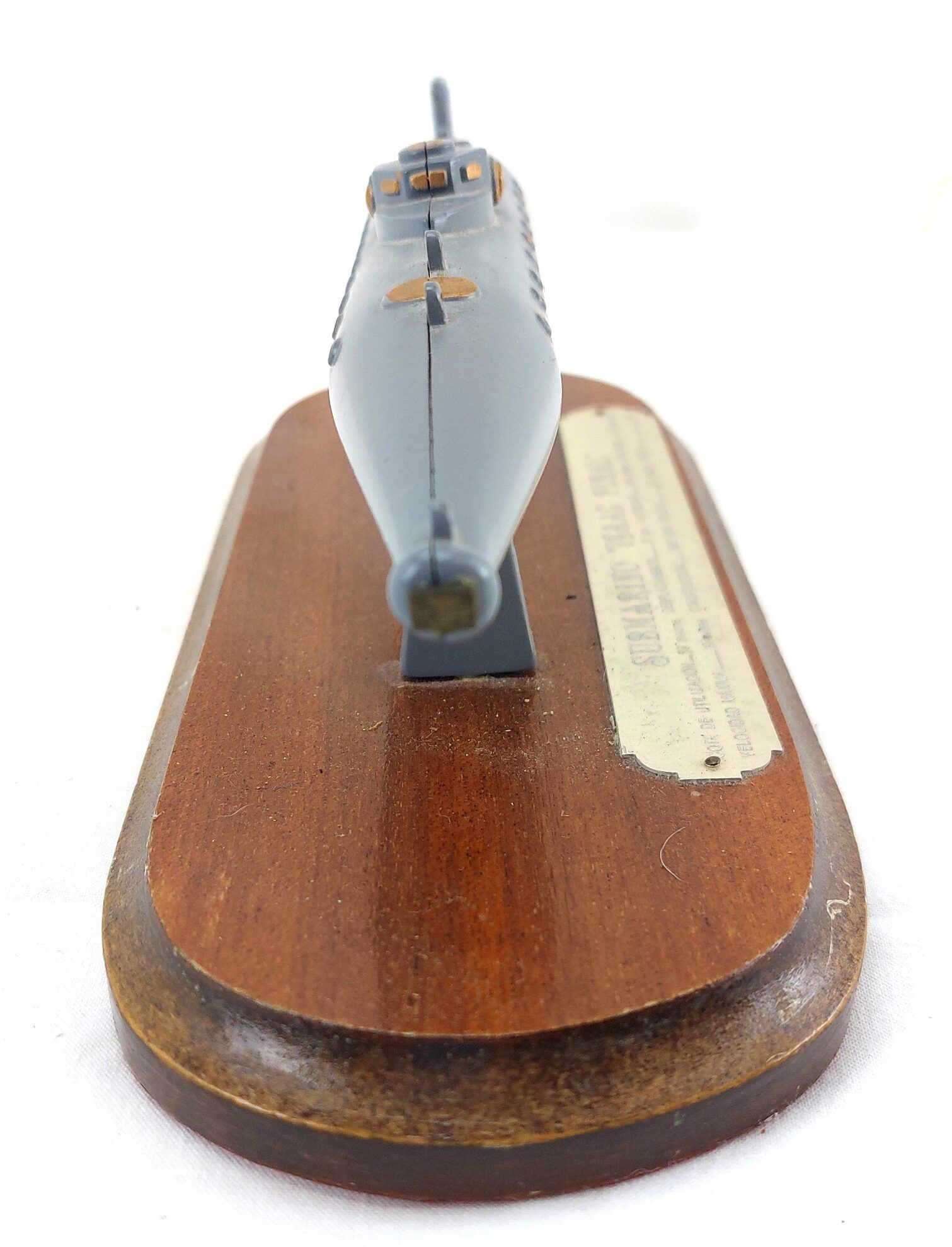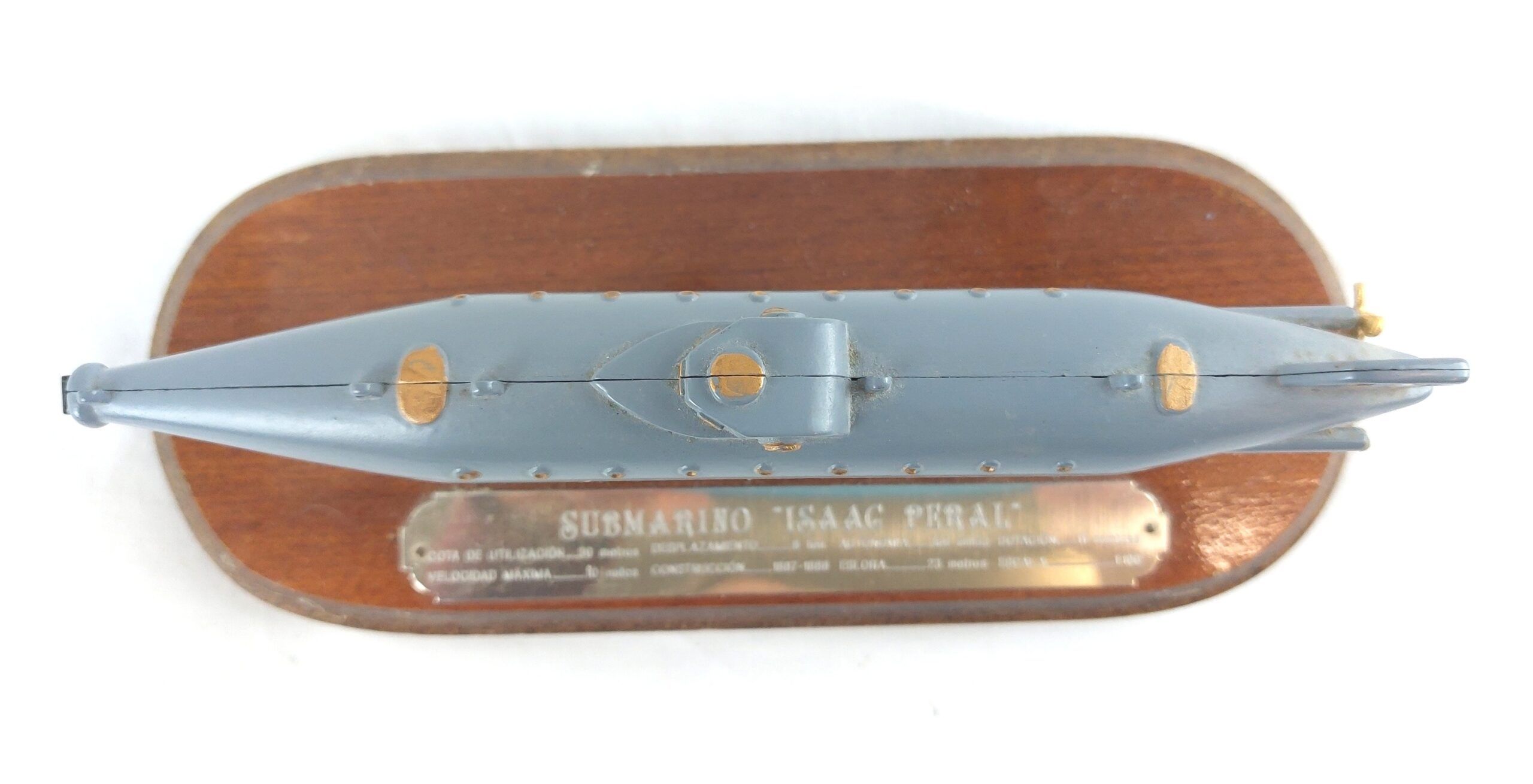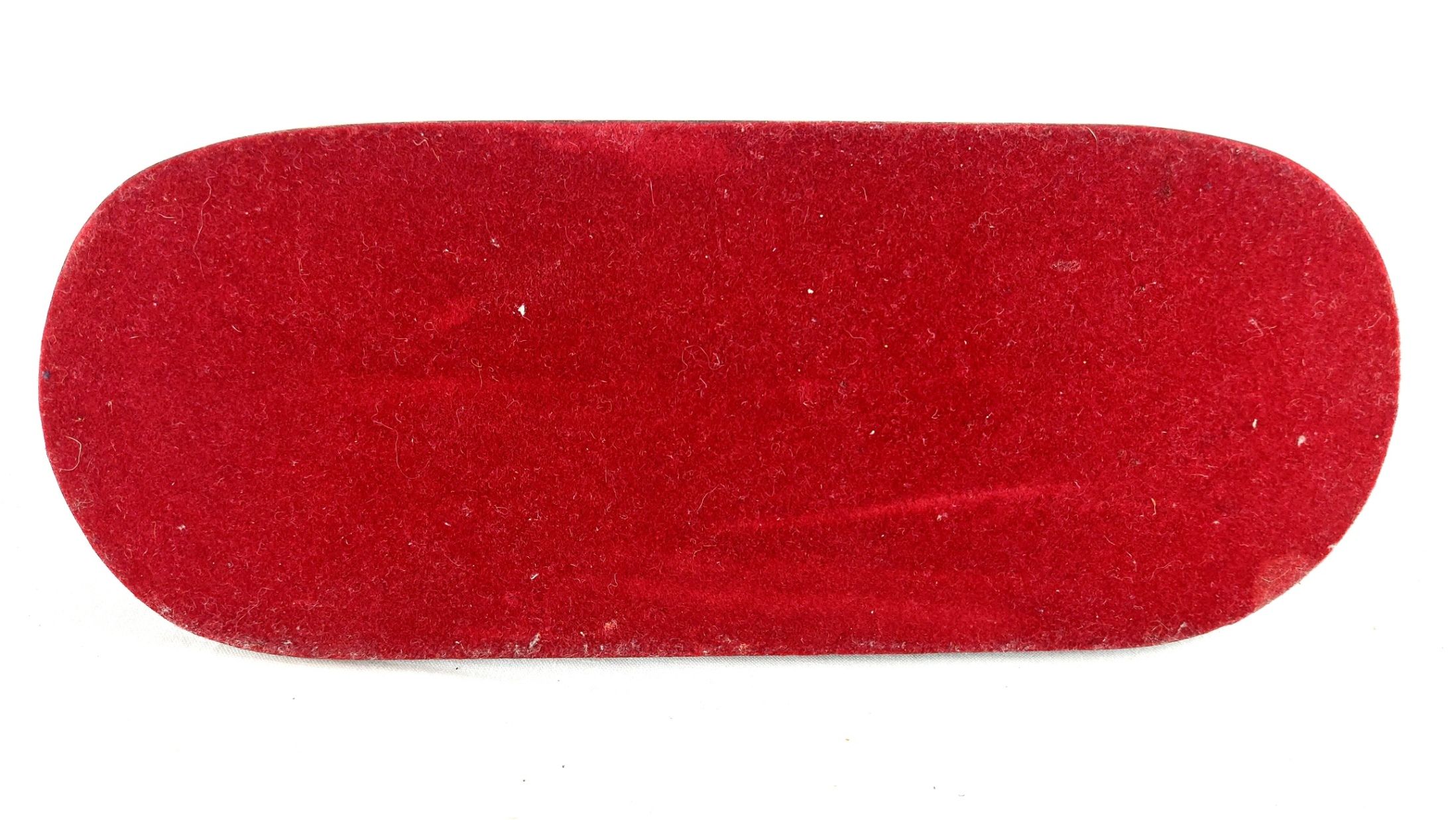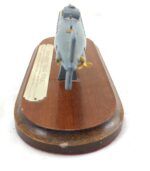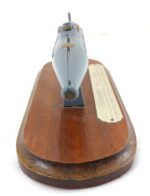*Spain, 1887, Vintage Named Model of Submarino “Isaac Peral”
Plague Inscribed:
Submarino “Isaac Peral”
Cota De Utilizacion – 30 metros
Desplazamiento – 8 ton.
Autonomia – 369 millas
Dotacion – 11 hombres
Velocidad Maxima – 10 nudos
Construccion – 1887-1888
Eslora 0 23 metros
Escala – 1:100
Approximate measurements:
Wooden Base: 23.8cm x 9.7cm x 1.7
Submarine: 21.2cm x 3.3cm wide x 4cm tall
Submarine mount: 3cm
Overall height: 8.7cm tall
Named Model of the Spanish Submarine Isaac Peral. Mounted on an oval wooden base.
The Peral was the first fully military-capable submarine powered exclusively by electric batteries and a ground-breaking innovation in naval technology. Designed by Spanish engineer and naval officer Isaac Peral for the Spanish Navy, it was launched on September 8, 1888, at the Arsenal de la Carraca (now Navantia) in Cádiz. The submarine incorporated numerous advanced features that anticipated later submarine designs, including a single torpedo tube, an air regeneration system, a periscope, and a streamlined hull shape for improved underwater performance.
Design and Features
The Peral had a length of over 22 meters (72 feet), a beam of 2.87 meters (9.4 feet), and a displacement of 77 tons surfaced and 85 tons submerged. It was powered by two 30 shp (22 kW) electric motors driving twin screws, enabling a top underwater speed of 10.9 knots (20.2 km/h; 12.5 mph) under ideal conditions with fully charged batteries. The batteries, weighing approximately 30 tons, consisted of 613 accumulators that provided limited endurance and range, as the submarine lacked an onboard battery charging system like an internal combustion engine.
The submarine’s air regeneration system utilized an auxiliary 6 hp (4 kW) engine to purify air through a sodium hydroxide scrubber and re-oxygenate it when necessary. Ballast tanks with an 8-ton capacity stabilized the vessel, while vertical-axis shafts driven by 4 hp (3 kW) electric motors provided diving and surfacing control. Peral also designed a rudimentary periscope, using prisms to project external images into the submarine.
Capabilities
The Peral could submerge to depths of up to 30 meters (98 feet) and conduct underwater torpedo attacks, making it a formidable concept for its time. During its trials, it demonstrated advanced handling and navigation, successfully firing a submerged torpedo in June 1890. The submarine’s torpedo system featured a single tube with quick reloading mechanisms and could carry three spare torpedoes. A 150-meter-range underwater lamp, another innovative addition, allowed the crew to observe the sea floor.
Operational Trials
The Peral underwent rigorous trials between 1889 and 1890, including surface navigation, submersion tests, and simulated attacks. It successfully executed a night attack on the cruiser Cristóbal Colón but failed a daylight trial due to visibility of its optical turret. Despite its advanced design, the submarine’s limited range and reliance on batteries were seen as drawbacks. Spanish naval authorities ultimately discontinued the project in November 1890, citing insufficient endurance and speed for sustained operations.
Legacy and Preservation
Although the Peral did not enter operational service, its innovative design matched many performance standards of World War I submarines decades later. After being withdrawn in 1890, the submarine was stripped of its equipment and stored. Efforts to preserve the vessel succeeded in 1929 when it was moved to Cartagena, where it remained on public display. It was relocated several times before undergoing restoration in 2013 and is now housed in the Cartagena Naval Museum.
Isaac Peral’s work on the submarine was ground-breaking, laying the foundation for modern underwater warfare and demonstrating the potential of battery-powered submarines. Despite its premature termination, the Peral remains a historic milestone in naval engineering.
*Condition*
Good used condition. One propeller is missing. Please see photographs as part of the condition report.
RQMHOXADO_6312193223

